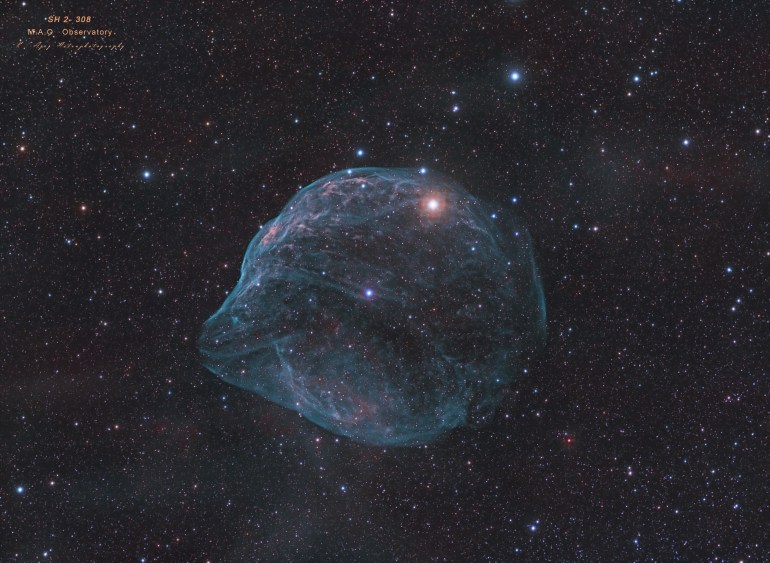Despite obtaining a degree in private law from the Faculty of Law in the city of Mohammedia (northeast of the Moroccan capital, Casablanca) in 2002, Aziz Taher Kaouache (43 years) continues his brilliance in the field of astrophotography, which he has been passionate about since the age of 11.
Kaouache's interest was limited in the beginning to observing the sky with a simple binoculars, and later on he moved to observe the celestial bodies with the first telescope he bought during his university studies at the University of Bordeaux in France in 2003.
The production of a single astrophotography requires a period of time ranging from one night to several nights in addition to the processing time (Al Jazeera)
From observation to photography
Kawash said in an interview with Al-Jazeera Net, "The year 2016 was for me a transition station from observation to astronomical imaging of the moon and planets, and then, in the following year, I began photographing the deep universe with its various bodies from nebulae to various galaxies."
Aziz adds, "This period was very stimulating due to the technical challenges that await me through mastering the processes of monitoring, photography and techniques for processing astronomical images."
The picture was taken by the Moroccan Astronomers Observatory on the outskirts of the city of Benslimane in 2020 (Al-Jazeera)
In addition to the important scientific role that astrophotography plays - especially in the recent cosmic discoveries of outer planets, comets and asteroids - according to the photographer, astrophotography brings astronomy closer to the public, especially since a large proportion of astronomical objects cannot be clearly seen directly even by using binoculars due to their weak flash (Magnitude), and therefore astrophotography remains the only refuge for introducing God’s creation from astronomical bodies.
Astrophotography requirements
Kawash explains that producing a single astronomical image requires a period of time ranging from one night to several nights, in addition to the processing time through several stages as follows:
Image of the Elephant Trunk Nebula IC1396 with SHO technology in 2019 (Al-Jazeera)
• Preparation of devices and imaging equipment.
• The imaging process may take an hour or several hours, by taking individual images from one minute to several minutes depending on the object, the intensity of its brightness, and the "filtre" used.
• Image processing by using specialized programs in this field.
The Tadpole Nebula "IC410" with "HO" technology in 2020 (Al-Jazeera)
Awards and publications
A group of photographs taken by Aziz Taher Kaouache won national awards, as he won the title of best Moroccan astronomer photographer for two consecutive years 2018 and 2019 at the Ifrane Astronomy Festival, and he won the same title at the Astronomy Festival in Marrakech, and a group of his photos also won international prizes published on international astronomical sites Specialized:
• Italian site apodgag
• American Photographing space site
• Swiss site aapod2
• Chinese website astronomy imaging camera
The BBC's "Sky at Night" magazine published his picture of the Rose Nebula in the April issue, in addition to the astrobin global website.
Planetary Nebula "NGC 7293" in 2019 (Al-Jazeera)
Fostering a passion for astronomy
The photographer says that people throughout the ages have been passionate about discovering the secrets of the universe, and astronomical images remain a source of admiration for the specialized and non-specialized public, and this is evident through the positive interaction of the followers and their questions about the characteristics of the offense and the subject of the image, all questions about the components of the object, its distance, characteristics and shape.
"Astronomy and astrophotography will remain among the most discussed topics on Moroccan social media," he concludes with Al-Jazeera Net.
Triple Lion "M65" with "LRGB" technology for 3 galaxies with gravitational interaction in 2021 (Al Jazeera)
He explained that this increased interest was the main motivation for him and a group of Moroccan astronomer photographers friends, in cooperation with Al Akhawayn University and in coordination with Dr. Hassan Daghamawi, to establish the University Astronomical Observatory of Ifrane, with the aim of disseminating the culture of astronomy through astrophotography through field activities or through the virtual world.

